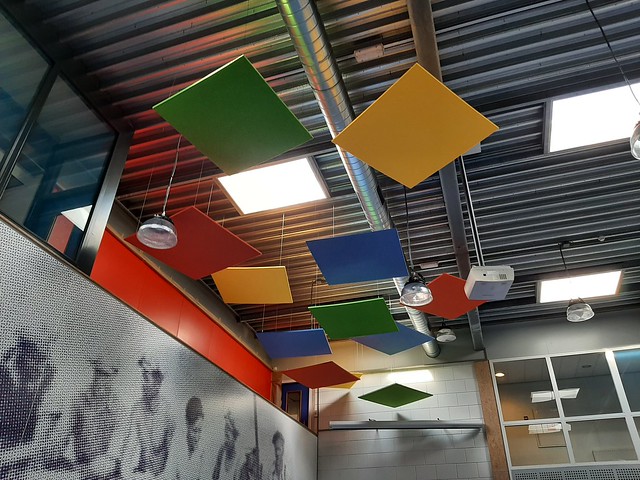Renovation and Interior Design Services
Renovations focus on making structural alterations to a space. They can include rearranging room layouts, adding windows and doors, or replacing fixtures.
Interior design, on the other hand, creates a more visually appealing environment. If you’re planning to make changes to your property, consider hiring a design-build company with an interior designer.
Design-Build
Design-Build is an approach that brings the designer and the contractor into a single contract for the entire project. It is a method for construction that can deliver faster and more cost-efficiently, and with less risk than other methods of building.
The advantage of Design-Build is that it allows for open communication and purposeful collaboration between the designers, architects, engineers and contractors. When all of these professionals sit at the same table, great ideas are born and solutions uncovered that could not be realized under other construction methodologies.
As a result, the architect and contractor work as a team from the start, providing unified project recommendations to fit your schedule and budget. This collaborative process reduces the occurrence of change orders during construction that cause project delays and increase costs.
Proponents of Design-Build say that it also brings value engineering to the project by allowing the contractor, engineer and specialty trade contractors to propose best-value solutions early in the design phase for construction elements such as building materials, utilities, schedule, constructability and budget. It can also mitigate conflict between the architect and contractor that may otherwise occur in the traditional Design-Bid-Build approach, in which the architect is hired separately from the contractor.
One other benefit of Design-Build is that a contractor will often begin the construction portion of your project while the design portion is still ongoing. This accelerates the construction process and allows you to get back into your space sooner.
General Contractor
For larger construction projects, it is necessary to have a general contractor oversee the work. They are the point person between the homeowner and all the different contractors and tradespeople that come in to build the house. renovation and interior design services Like a producer in a play, they take the design and bring it to life with all of the actors working together towards the same goal: a beautiful home.
These professionals enter into a primary contract with the property owner and manage all aspects of construction for a building project, from the initial planning to the final stages of construction and inspections. They are also responsible for managing the supply of raw materials and building components, obtaining building permits, scheduling inspections, managing communications between the homeowner and the subcontractors, and more.
The role of a general contractor can be combined with the role of an architect in design-build projects where the architects provide the designs and the contractors construct them. However, more often they are hired to implement the design provided by the architect. When you’re looking for a GC, ask for references from previous clients and check online reviews. A few bad ones can be forgiven, but a long string of negative comments is a red flag.
Ask your prospective GC for an estimate of the total cost of the project and a timeline for completion. Also, find out if they require payment before beginning the work. If they do, it’s important to get that in writing so that you can be protected if something goes wrong on the job site.
Interior Designer
Interior design services involve the process of enhancing a space’s interior. They can be used to make a home or commercial building more functional, attractive and safe for its users. They can also be used to meet specific environmental or regulatory requirements. In addition to decorating, interior designers may be involved in project planning, space planning, site inspections, research and communication with stakeholders, construction management, and implementation of the final design.
One of the main tasks of an interior designer is to assist clients in making decisions about color schemes and furniture placement. This requires a strong understanding of the client’s preferences, lifestyle needs, and architectural style. Interior designers use their knowledge of color theory and layout to create designs that are both aesthetically pleasing and functional.
Another important skill that interior designers need is attention to detail. This is particularly true when drafting and creating plans for the space they are designing. This helps to ensure that the plan is complete and accurate. It can also prevent costly mistakes during construction or installation of the final design.
While working with an interior designer can come hotel furniture manufacturers at a cost, they can often save homeowners money by identifying which renovations are most likely to increase the value of the property and which will not. They can also help to avoid costly errors during the construction process by ensuring that all aspects of a renovation are reviewed and approved by the appropriate parties before starting work.
Subcontractors
A subcontractor is a person or business who contracts to perform work not within the scope of their normal business operations. They provide specialized skill sets and resources to a company (the contracting party) in exchange for a contractual fee. Subcontractors are typically engaged for fixed-term contracts or task-based contracts with no set end date.
Contractors are often responsible for managing multiple subcontractors. This could include specialist trades like electricians and plumbers or more general subcontractors, such as drywall installers, carpenters and painters. In some cases, a contractor may choose to hire a super-subcontractor to manage all of the different project tasks and subcontractors.
The process of hiring a subcontractor begins with the main contractor identifying the need for specialized skills or resources for a specific task. They may then issue a Request for Proposal or Invitation to Bid to potential subcontractors. These documents detail the specific project details, timelines and quality standards for the work to be performed. Subcontractors who are interested in the opportunity may submit proposals or bids that will be evaluated by the main contractor based on the expertise required, cost and other factors.
Once a subcontractor is selected, they will enter into a contractual agreement with the main contractor to begin working on the specific tasks outlined in the contract. The key to a successful collaboration is open and transparent communication between both parties. Regular updates, reports and meetings can help to ensure that all issues are addressed promptly.


